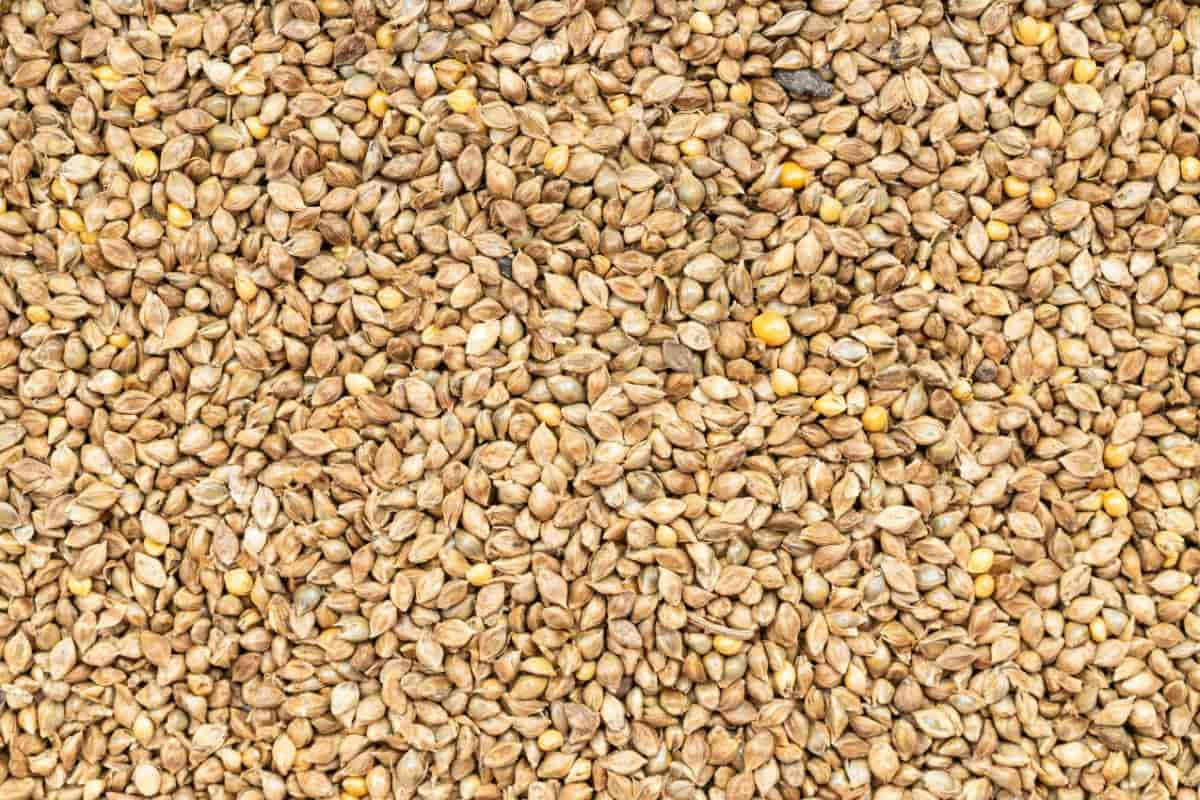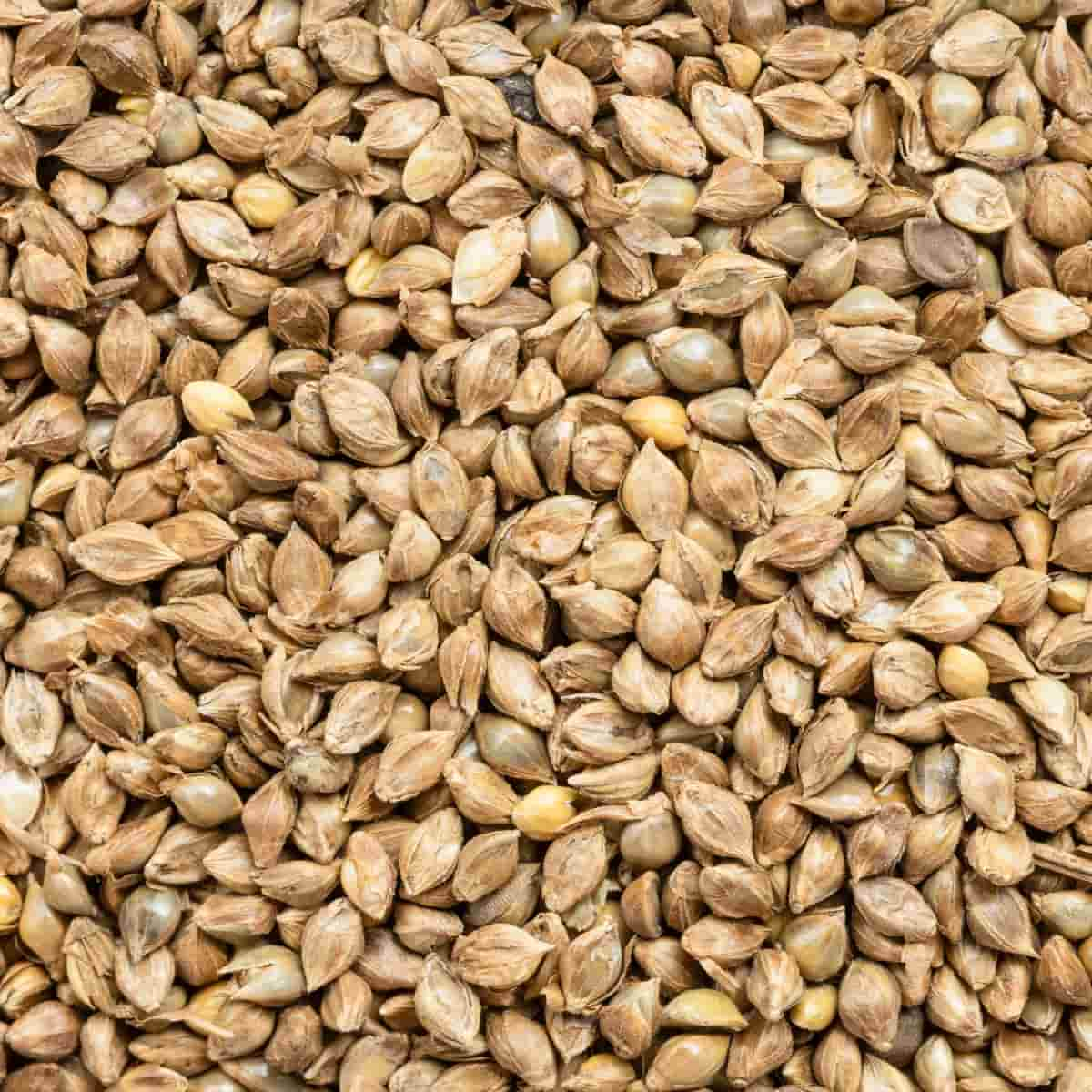Banyard millet, a versatile and nutritious grain, has gained significant attention in recent years due to its potential for profitability. This study investigates the economics of cultivating barnyard millet on a one-acre farm, analyzing key factors such as input costs, yield, market prices, and profitability. By exploring these aspects, we aim to provide insights into the viability and potential gains of barnyard millet cultivation for farmers.

Economics of 1-Acre Barnyard Millet Cultivation
What is Barnyard Millet Cultivation?
Barnyard millet, an annual crop, typically reaches a height of one to three feet. Its stems are sturdy and often bent at the knee, while the leaf sheaths are compressed, sharply keeled, and feature a cluster of long hairs at the base. The panicle consists of multiple one-sided clusters of spikelets, which vary in size, color, and overall appearance.
Each spikelet contains a single flower, usually with a short, stout awn, although some varieties lack it, while others possess a long awn. Harvesting barnyard millet for hay during flowering or earlier is important, as the quality deteriorates rapidly after blooming. Cutting can be delayed until flowering is well over if intended for ensilage.
Market and Demand for Barnyard Millet
The market and demand for barnyard millet have been experiencing significant growth in recent years. Millets, including barnyard millet, have gained popularity due to their nutritional benefits, gluten-free nature, and sustainable cultivation practices. The global market for millet, including barnyard millet, has witnessed a CAGR of around 5% to 7% in recent years. This growth is primarily driven by increasing consumer awareness of the health benefits of millet and the growing demand for gluten-free and alternative grain options.
Best High-Yielding Variety for Barnyard Millet Cultivation
Barnyard millet varieties are cultivated across different states in India. In Uttarakhand, the popular varieties include VL 172, VL 207, PRJ 1, VL 29, PRS 1, and DHBM93-3. Uttar Pradesh cultivates VL 172, VL 207, Anurag, VL 29, DHBM 93-3, and Kanchan. Tamil Nadu grows MDU-1, DHBM93-3, DHBM23-3, CO 1, CO 2, VL 181, and VL 29.
Karnataka cultivates VL 172, RAU 11, VL 181, DHBM 93-3, DHB 93-2, and DHBM23-3. Gujarat has Gujarat Banti1, DHBM93-3, and VL172 varieties. Bihar grows VL Madira 181 and DHBM93-3. Andhra Pradesh and Telangana cultivate DHBM93-3 and DHBM23-3, while Madhya Pradesh grows DHBM93-3 and DHBM23-3 varieties.
Best Package and Practices for Barnyard Millet Cultivation/Farming
Adaptation and Plant Characteristics: Barnyard millet, popularly grown in the northern hills of India, particularly in the foothills of the Himalayas, is an important crop in hill and tribal agriculture. It is also cultivated on a smaller scale in Bihar, Tamil Nadu, Maharashtra, and Madhya Pradesh. The plant is tall and erect, reaching a height of 50-95 cm. Its leaves are usually flat, usually glabrous, but they may have slight hairiness and lack ligules. The grain is a caryopsis, typically white or yellow.
Seed Rate and Treatment: The recommended seed rate for optimal sowing is 8-10 kg/ha for line sowing and 15 kg/ha for broadcasting. Prior to sowing, the seeds should be treated with Ceresan at a rate of 3 g/kg of seed.
Season and Sowing Time: In Tamil Nadu, barnyard millet is sown in September-October in rainfed areas and February-March in irrigated lands. In Uttaranchal and the northeastern states, it is sown in April-May. In the hills, dry seeding is practiced before the monsoon onset. For the Kharif season, sowing occurs from June to July; the Rabi season is from September to October.
In case you missed it: 1-Acre Pearl Millet Cultivation Profit and Cost: Production Economics and Farming Project Report

Method of Sowing and Spacing: Broadcasting and line sowing is recommended for sowing barnyard millet. The spacing guidelines suggest row-to-row spacing of 25 cm, plant-to-plant spacing of 10 cm, and a sowing depth of 3-4 cm.
Manures and Fertilizers: About a month before sowing, the application of 5-10 t/ha of farmyard manure (FYM) is advisable. As for fertilizers, the recommended amounts per hectare are 40 kg of nitrogen (N), 20 kg of phosphorous pentoxide (P2O5), and 20 kg of potassium oxide (K2O). The fertilizer requirements may vary for different states.
Water Management: Barnyard millet generally does not require irrigation. However, if a dry spell persists for an extended period, one irrigation at 25-30 days after sowing (DAS) and another at the panicle initiation stage (45-50 DAS) can be provided.
Weed Control: Grassy weeds such as Echinochloa colonum, Echinochloa crusgalli (sawan), Dactyloctenium aegypticum (make), Elusine indica, Setaria glauca (bara), Cynodon dactylon (doob), Phragmites karka (Markus), and Cyperus rotundus (motha) are common, along with broad-leaved weeds like Celosia argentia (chili mill), Commelina benghalensis (Kaikoura), Phyllanthus niruri (hull), Solanum nigrum (make), and Amaranthus viridis (chaplain).
Weed control involves two inter-cultivations, hand weeding for line-sown crops and two hand weedings for broadcast crops. Post-emergence application of 2,4-D sodium salt (80%) and a pre-emergence spray of Isoproturon are effective methods for weed control.
Cropping System: A recommended system is barnyard millet + rice bean in a 4:1 row ratio for Uttaranchal.
Insect Pests and Management: The shoot fly is a serious pest causing significant yield losses. Early sowing with the onset of monsoon is an effective and economical control method. Stem borers can be managed by applying Carbofuran 3G in the soil at a 20 kg/ha rate during field preparation. Termites can be controlled by mixing Chlorpyrifos 5D with the soil at a rate of 35 kg/ha at sowing or applying Methyl parathion (2%) dust at 20-25 kg/ha before sowing.
Diseases and Management: Smut is an important disease affecting barnyard millet, with grain smut being the most significant. Seed treatment with thiram and soaking seeds in hot water at 55°C for 7-12 minutes is a recommended management practice.
Harvesting and Threshing: Barnyard millet should be harvested when the panicles have dried. It is cut at ground level using sickles and then stacked in the field for approximately a week. Threshing can be done by trampling under the feet of bullocks or by using suitable threshing machines.
Cost of Cultivation for 1-Acre Barnyard Millet Cultivation/Farming
The components included in the cost of cultivation are land preparation, seed, manures and fertilizers, irrigation, labour, weed control, insect and disease management, harvesting and threshing, and miscellaneous expenses.
| Cost Components | Amount (INR) |
| Land Preparation | 800-1,000 |
| Seed | 500-600 |
| Manures and Fertilizers | 1,500-1,800 |
| Irrigation | 400-500 |
| Labour | 1,000-1,200 |
| Weed Control | 300-400 |
| Insect and Disease Management | 300-400 |
| Harvesting and Threshing | 500-600 |
| Miscellaneous | 200-300 |
| Total Cost | 5,000-6,000 |
Total Returns and Net from 1Acre Barnyard Millet Cultivation/Farming
- Yield per acre: 7 to 9 quintals
- Price per quintal: 3500 INR
- Cost of cultivation: 5000 to 6000 INR
- Calculate the total returns and net using the minimum and maximum values for yield and cost:
- Minimum Yield (7 quintals per acre): Total Returns = Yield per acre * Price per quintal Total Returns = 7 quintals * 3500 INR/quintal Total Returns = 24,500 INR
- Net = Total Returns – Cost of Cultivation Net = 24,500 INR – 6000 INR Net = 18,500 INR
- Maximum Yield (9 quintals per acre): Total Returns = Yield per acre * Price per quintal Total Returns = 9 quintals * 3500 INR/quintal Total Returns = 31,500 INR
- Net = Total Returns – Cost of Cultivation Net = 31,500 INR – 5000 INR Net = 26,500 INR
- Therefore, the net returns from 1-acre barnyard millet cultivation can range from 18,500 INR to 26,500 INR.
Challenges and Risks in Barnyard Millet Cultivation/Farming
These include susceptibility to pests and diseases like shoot flies, stem borer, and smut, which can significantly impact yield. Weeds, particularly grassy and broad-leaved weeds, also pose a threat. Erratic rainfall, drought, and dry spells can affect growth and yield.
In case you missed it: Project Report of 1-Acre Proso Millet Cultivation: Cost, Profit Analysis, and Production Economics

Conclusion
The economics of 1-acre barnyard millet cultivation show promising potential for profitability. With proper soil preparation, recommended sowing methods, efficient watering practices, and effective pest management, farmers can unlock the economic benefits of this crop and achieve profitability in their cultivation endeavors.
- Feed Your Flock for Less: Top 10 Tips to Save on Chicken Feed
- Ultimate Guide to Ossabaw Island Hog: Breeding, Raising, Diet, and Care
- Hatching Answers: The Top 10 Reasons Your Chickens Aren’t Laying Eggs
- Eggs and Economics: Breaking Down the Cost of Raising Backyard Chickens
- Defend Your Greens: Proven Methods to Keep Iguanas Out of Your Garden
- Ultimate Guide to Cinnamon Queen Chicken: A Comprehensive Guide for Beginners
- Ultimate Guide to California Tan Chicken: Breeding, Raising, Diet, Egg-Production and Care
- Ultimate Guide to Marsh Daisy Chicken: Breeding, Raising, Diet, and Care
- 10 Types of Chicken Farming Businesses You Can Start for Profits